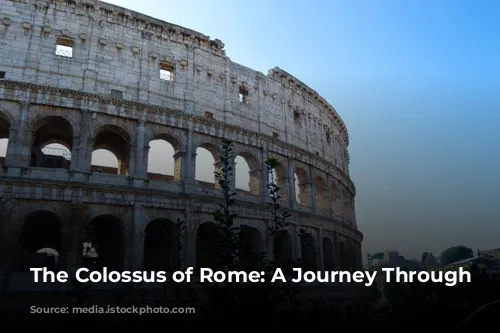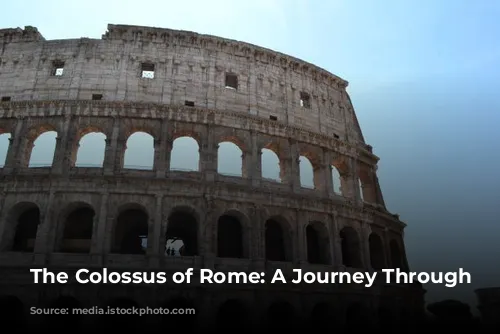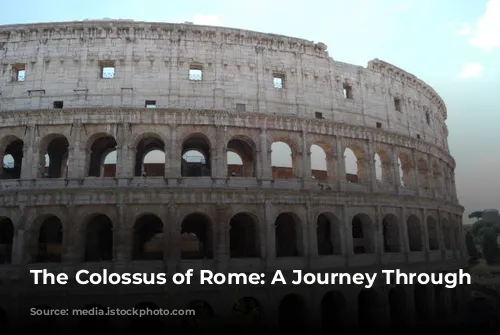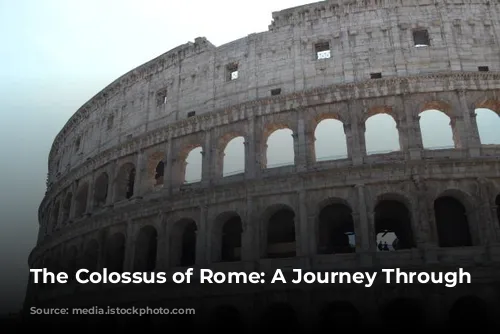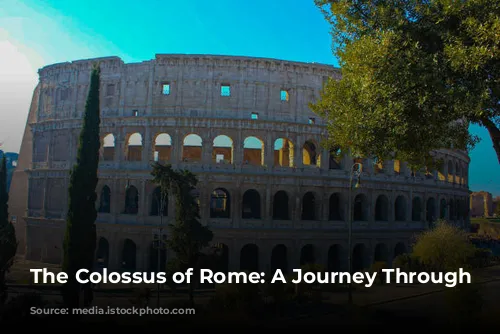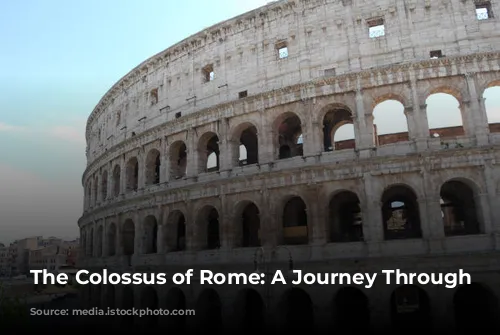The Colosseum, the most iconic monument in Rome, towers over the city as a testament to the Roman Empire’s might. This imposing amphitheater, known also as the Flavian Amphitheater, was a project of Emperor Vespasian and was inaugurated by his son Titus in 80 A.D.
The inauguration, an opulent spectacle, stretched over a staggering 100 days, filled with thrilling gladiatorial contests, dazzling animal hunts, and even naumachiae, awe-inspiring sea battles recreated within the arena.
Why “Colosseum”? This moniker first emerged in the prophecies of the Venerable Bede, a medieval monk, who declared: “Rome will exist as long as the Colosseum does; when the Colosseum falls so will Rome; when Rome falls so will the world.” This prediction likely linked the name to the colossal statue of Emperor Nero, known as “the Colossus“, which stood nearby and has since vanished.
A Masterpiece of Roman Engineering
The Roman Colosseum was once a dazzling sight, gleaming white with travertine marble slabs. Its elliptical shape maximized seating capacity, and its four levels boasted a staggering eighty arches each. The second and third floors were adorned with grand statues, further adding to the spectacle.
The sheer scale of the Colosseum is astounding – it was built in less than a decade! The Romans were masters of the arch, a structural marvel allowing for the efficient distribution of weight in massive constructions, seen in aqueducts and other architectural wonders. Imagine the Colosseum as a series of aqueducts stacked upon one another.
Today, the Colosseum stands as a skeleton of its former glory, with three-fifths of its outer brick wall missing. Its stones were plundered for centuries, used to build palaces like the Barberini Palace and Piazza Venezia, even St. Peter’s Basilica. The holes you see in its columns were once used to extract lead and iron, salvaged from the marble blocks.
A Seat for Every Citizen
The Colosseum, with a capacity of up to 70,000 spectators, offered a perfect view from every seat, thanks to its inclined seating tiers. Entry was free for all Roman citizens, but seating was carefully allocated based on social standing, much like modern theaters. The common people found their place at the top, with distinct sections for men and women. As you moved closer to the arena, social status increased, culminating in the front row, reserved for senators, vestals, priests, and, of course, the Emperor himself.
The Colosseum also boasted an ingenious retractable roof, the Velarium, a massive linen awning. It was manipulated using a network of ropes, winches, and wooden poles, requiring the coordinated efforts of 100 sailors from the Imperial fleet.
The Games Within: Gladiators and Spectacle
The Colosseum’s heart, the arena, once a vibrant stage for shows, is now bare, revealing the underground cellars that housed equipment used for the games. These cellars contained lifts and hoists with counterweights, still visible today, used to dramatically raise animals and gladiators onto the arena floor.
Spectacular set designs were also lifted into place, creating believable forests and other environments for the animal hunts.
The Colosseum’s shows were not just entertainment; they were symbolic spectacles that fostered a sense of unity between the citizens and their leader. The games provided diversion and a much-needed escape from the complexities of political life.
A Tapestry of Thrills: From Beasts to Bloodless Wonders
The Colosseum hosted a diverse array of shows, following a carefully crafted schedule. The Venationes, staged in the morning, were a spectacle of exotic animals battling each other or humans. These events sometimes served as public executions, leaving condemned individuals at the mercy of ferocious beasts.
The Silvae were particularly dramatic, recreating realistic forests filled with animals using painted scenery, where the animals were not necessarily killed. The audience even enjoyed the intelligence of an elephant that could write words in the sand with its trunk.
However, the gladiator fights were the most captivating. After a break, during which the arena was cleaned and sprinkled with sand, a deafening roar would erupt from the audience. Gladiators, hailed as heroes, would emerge from their barracks, the Ludus Magnus, and parade triumphantly into the arena.
The Gladiator: A Path to Fame and Freedom
The word gladiator is derived from Gladius, the short sword used by Roman legionaries. While popular perception portrays them as forced combatants, many gladiators were prisoners of war offered the choice of slavery or fighting in the arena for a limited period, often gaining their freedom after saving a certain sum of money. Others were simply desperate for fame and fortune.
Gladiator life offered not only wealth but also stardom, especially among women who were willing to pay handsomely for a night with these celebrated warriors.
The Colosseum saw twelve distinct types of gladiators, each with their unique weapon and armor. The Retiarius, armed with a net, a trident, and a knife, was a formidable opponent. Others wielded shields and sickles, while some wore crested helmets and carried javelins.
These gladiators fought in dramatic duels, with the outcome often left to the audience. If a gladiator was wounded, he could plead for mercy by raising his arm, leaving his fate in the hands of the Emperor. A thumbs-up signaled pardon, while a thumbs-down meant death.
Victorious gladiators were showered with golden palm leaves and riches. Servants, dressed like Charon, the Ferryman of the Underworld, ensured the wounded were truly dead, sometimes finishing them off. The gladiator’s blood was highly sought after, believed to have healing powers for ailments like epilepsy and to enhance sexual vigor.
A Glimpse into Ancient Brutality
The Colosseum witnessed shows we would consider brutal, even violent. This fascination with bloodshed echoes the modern-day interest in “splatter” cinema, but the Colosseum’s reality was raw and immediate. The stench of blood, burnt flesh, and wild animals was inescapable, even with the use of incense and perfume.
From Glory to Ruin and Rebirth
After the decline of the Roman Empire, the Colosseum fell into disuse, its walls becoming home to religious orders, hospitals, hermits, and even a cemetery.
In the Middle Ages, it became a quarry for marble, lead, and iron, used by Popes to construct majestic buildings like the Barberini Palace, Piazza Venezia, and even St. Peter’s Basilica.
Sixtus V considered demolishing it for urban renewal, but Benedict XIV declared it a sacred monument dedicated to the Passion of Christ, placing a cross atop it. This act symbolized the suffering of Christian martyrs, making the Colosseum a sacred space and saving it from destruction.
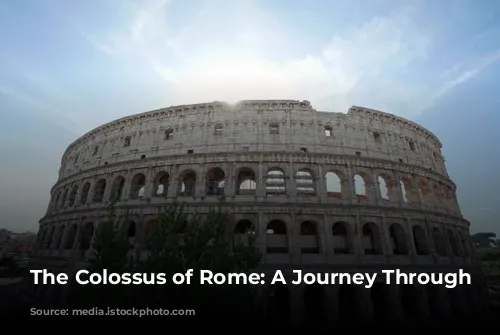
A Ghost of Old Rome
The Colosseum is a mesmerizing testament to the grandeur of the Roman Empire, drawing crowds from around the globe. As Charles Dickens aptly described it, a visit to the Colosseum is like “seeing the ghost of old Rome floating over the places its people walk in.” The Colosseum stands as a powerful reminder of the past, its walls whispering tales of emperors, gladiators, and the vibrant tapestry of life in ancient Rome.
